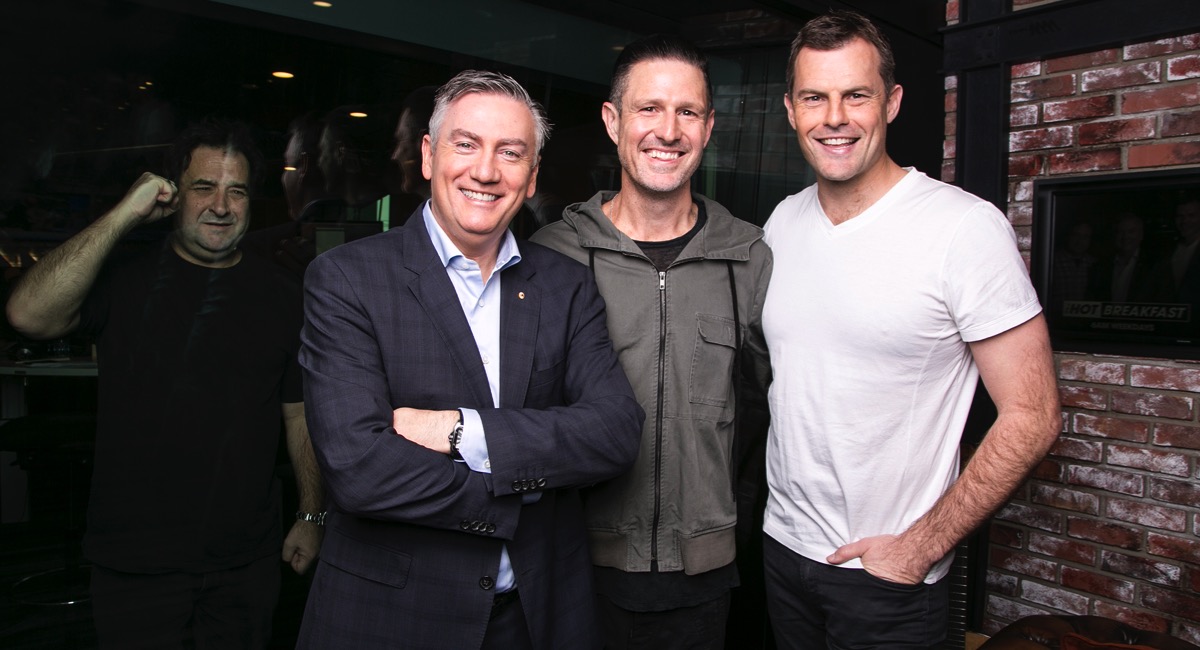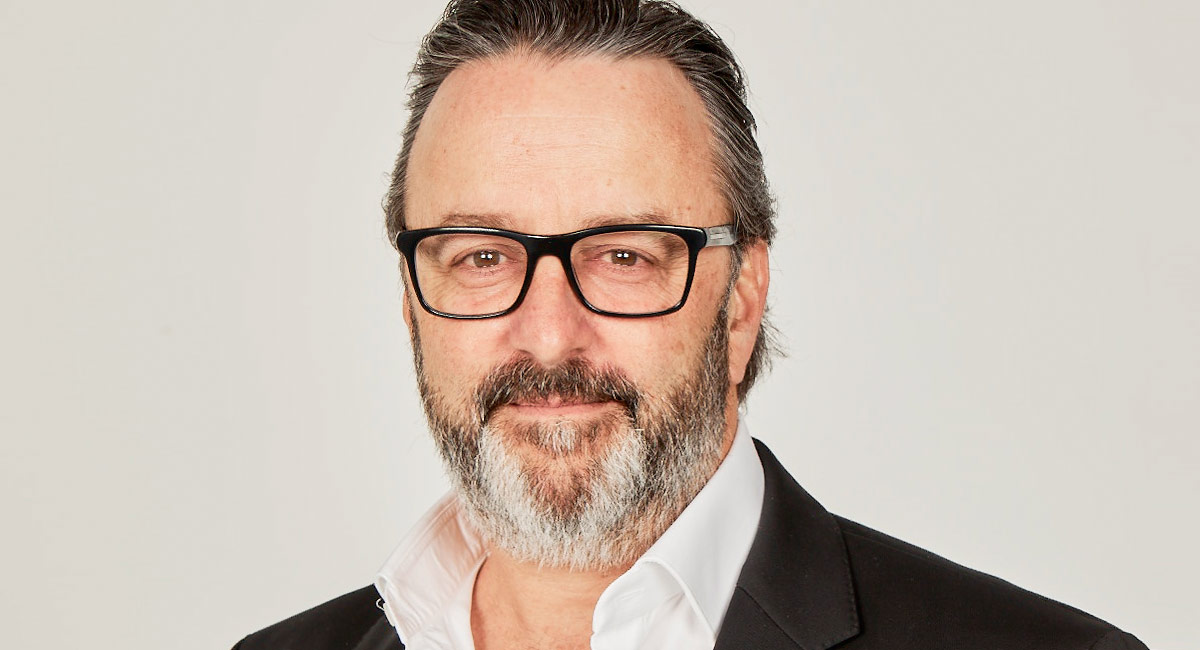Southern Cross Austereo’s national Triple M network across 30+ stations and digital channels has gone to market early in 2018 using its new Kennedy Molloy national drive brand to speak to advertisers about what SCA chief sales officer Brian Gallagher calls “a very complete package”.
• SCA results: Regional the star performer, drive shows the hope for metro radio rebound
Triple M has long been a solid performer for advertisers seeking men of a certain age. For some years it had lived under the shadow on Southern Cross Austereo’s Today/Hit Network. The revival of the current-day Triple M arguably started when Eddie McGuire arrived at the Melbourne station and built his Hot Breakfast show.
The Grill Team in Sydney has been a consistent performer through this period too, with the more recent arrival of Roo and Ditts at Adelaide breakfast. Triple M breakfast in Brisbane remains a work in progress, although Robin Bailey and Marto seem a good combination now into their second year, and now with a new third team member.
When Mediaweek spoke with SCA chief sales officer Brian Gallagher on the Sydney stop of the Kennedy Molloy Long Lunch tour, he scoffed at any suggestion the station might have a narrow focus. “Males aren’t narrow. They are half the audience.”
• ‘A well thought-out shambles’: Kennedy and Molloy on their national drive show
Gallagher said: “The thing about Triple M that is absolutely unique, and something that appealed to me when I arrived in this role, is that the brand does what it says on the tin, unlike any other media product out there.
“The journey that Triple M is on now sees it moving from blokes to men. The team has done a lot of research around the psyche of the modern male and how the modern male expects to have to behave, how they perceive themselves.
“The brand is evolving its content. The music mix and how we are scheduling the new content are constantly under review and Fitzy [Triple M content director Mike Fitzpatrick] has a real handle on the nuance of Triple M from regional Triple M right through all the different styles of the metro Triple Ms.
“It is quite a bespoke station depending on where it sits, but it has an over-arching brand positioning that delivers in the demos for men.
“There is a growing number of women who engage with the brand too and while the content is positioned to appeal to men, it will not offend or push away women.
“With the various breakfast shows we have, and now Jane Kennedy and Mick Molloy in drive, what we are able to do for the advertisers is offer a very complete package.”

Triple M’s Jane Kennedy and Mick Molloy in Sydney
Radio engagement
Gallagher: “What the drive show is doing with VB is an illustration of what radio does best. In the world we live in, people talk about the justification of social media and online platforms in relation to engagement. In the absence of any other metrics, engagement might equal ROI. Engagement is a good one to pull out.
“The ultimate medium for engagement is radio and when you are able to take a demographic profile for Triple M, which allows you to laser-beam focus on men, you are able to produce and distribute the content and create content at a local level all around the country that is very targeted. That is engagement.
“We have on-air personalities telling stories and having discussions that the target audience actually wants to hear and be engaged with. That could be anything from cricket to football to what we think about Barnaby’s latest adventure. When a brand aligns strongly to Triple M, and Triple M delivers on your expectation of what it was going to give you, that creates a very high level of engagement and that is working very strongly for our brand partners.
“What we have been seeing with Triple M over the last few years is a ramping up of revenue and the appeal to advertisers.”
A national brand
Gallagher said re-branding many of the SCA regional network as Triple M stations has paid dividends.
“The growth rates on ad revenue in the regional markets at the moment are pretty phenomenal. That is part of a strategy that makes it important for the business to play to its core strengths.
“The core strengths are distribution – we distribute content to 95% of Australians. We are very good at that.
“We are also very good at distributing the kind of content they want. Local content production is a core strength for SCA.
“Another core strength is how we have people in market dealing with small business, medium business, agencies and large business – helping them drive their business.
“When we are faced by what might be called disintermediation of old and new media because of new platforms, it is really important for us to aggregate as much audience as we can and drive as much audience as we can to our platforms.
“Over time we are going to broadcast more to IP-delivered audiences under our brands. That could be via Triple M apps and desktop in-office listening. It is important for us to aggregate all of our efforts to maximise that digitisation of the broadcast business under a brand umbrella.
“It doesn’t make sense to build a digital business for a Star FM where there might be a 50,000 catchment of audience. What makes sense is a programming and audience strategy that we can emulate nationally, play to our strengths in terms of local content, but build a brand – whether it be Triple M or Hit Network for us.
“The most efficient way to do that is operate under two umbrella brands.”

Triple M Melbourne’s Hot Breakfast team: Eddie McGuire, Wil Anderson and Luke Darcy
SCA digital strategy
Gallagher referred to what SCA is doing in metro markets with its DAB spectrum. “We have created two brand families under Hit and Triple M where there are stations all linked to the mother ship. The stations run music variants from the core, but still have a defined audience appeal – more female-skewed on Hit with four different variants, more male-skewed on Triple M, also with four different variants.”
He added that is a precursor to a more personalised approach of how radio products are delivered in an app-based environment.
As to ad loads on these digital channels, Gallagher noted: “Every single station emulates the FM ad load. We are not selling a spot on an FM station. We are selling that FM spot, but the advertiser is also getting the digital channels too. That is increasing dramatically the audience we are providing to advertisers.”
He noted it was not a bonus. “We are delivering more audience and we are getting paid for more audience.”
Triple M cricket
When asked if the coverage of the Ashes Tests across the summer was a test for how Triple M might cover more summer sport, Gallagher explained the test was the previous year, the summer of 2016-17.
“We didn’t make too big a deal of it, but we did carry sponsors and it was successful. It was a precursor to the big push on the Ashes. We had extraordinary talent on air and they delivered an extraordinary outcome. That broadcast team and the way they conducted themselves and the product they delivered has made waves around the cricketing world. There are discussions in other territories about emulating what Triple M achieved over the summer.
“The consumer feedback was extraordinary as was the industry feedback. The commercial outcome was also pretty good.”
When asked if Triple M would be a cricket broadcaster every summer, Gallagher replied, “I would hope so.”
Radio outlook
Gallagher was upbeat about the ability of radio to hold its place in the media landscape as it has done in previous years.
“We should see some growth too. Last year, correctly and quite rightly, advertisers started looking for real media ROI – they wanted reach and impact. They naturally found their way back to TV. ThinkTV has done a pretty sound job of reinvigorating interest.
“We have had to fight hard to keep our share of the market, which we did. What we are seeing now is a new planning cycle and I see a reasonably positive outlook for TV and for radio.”
